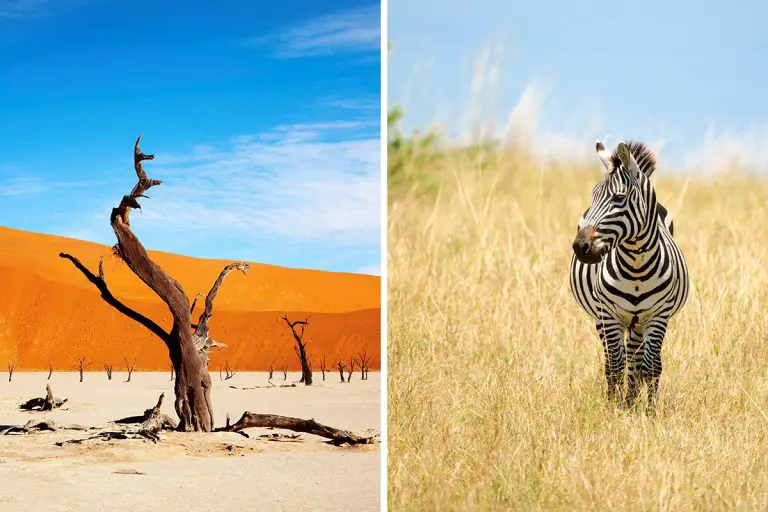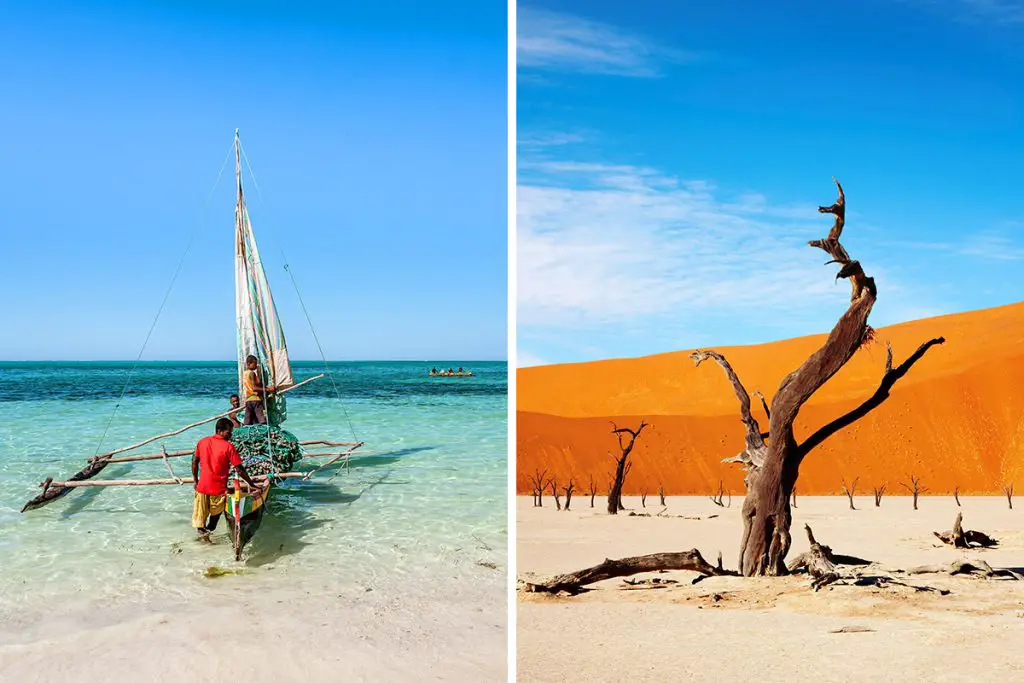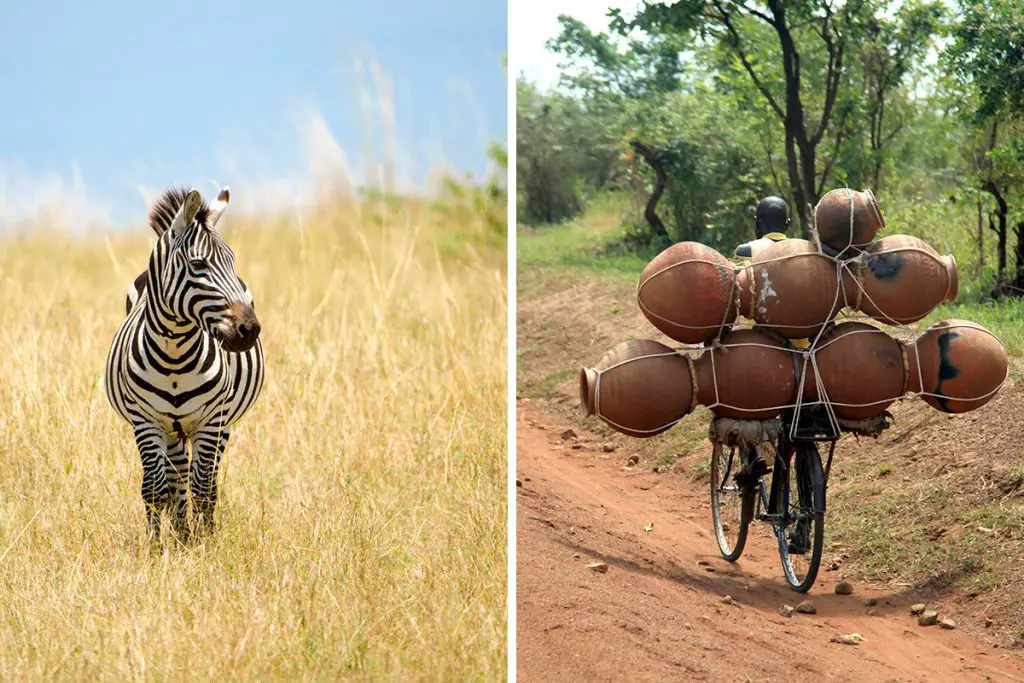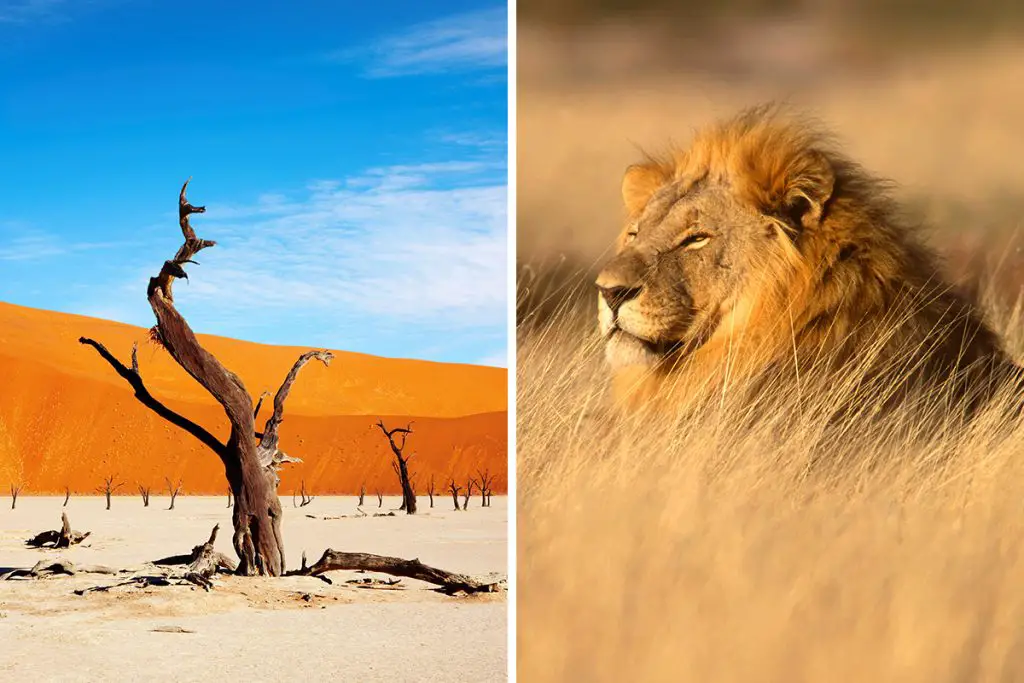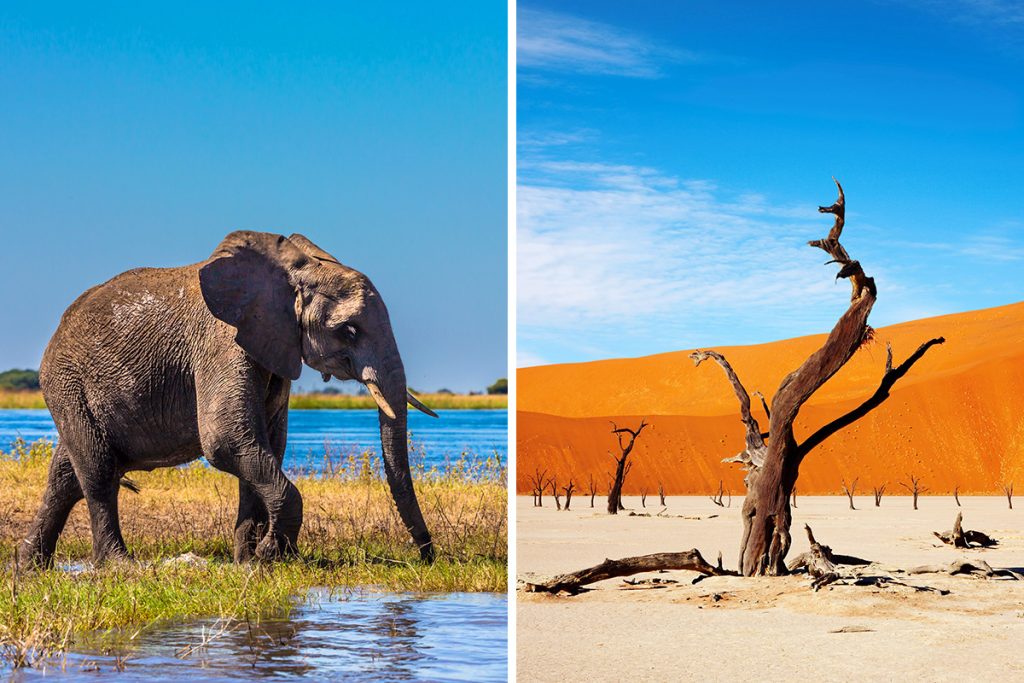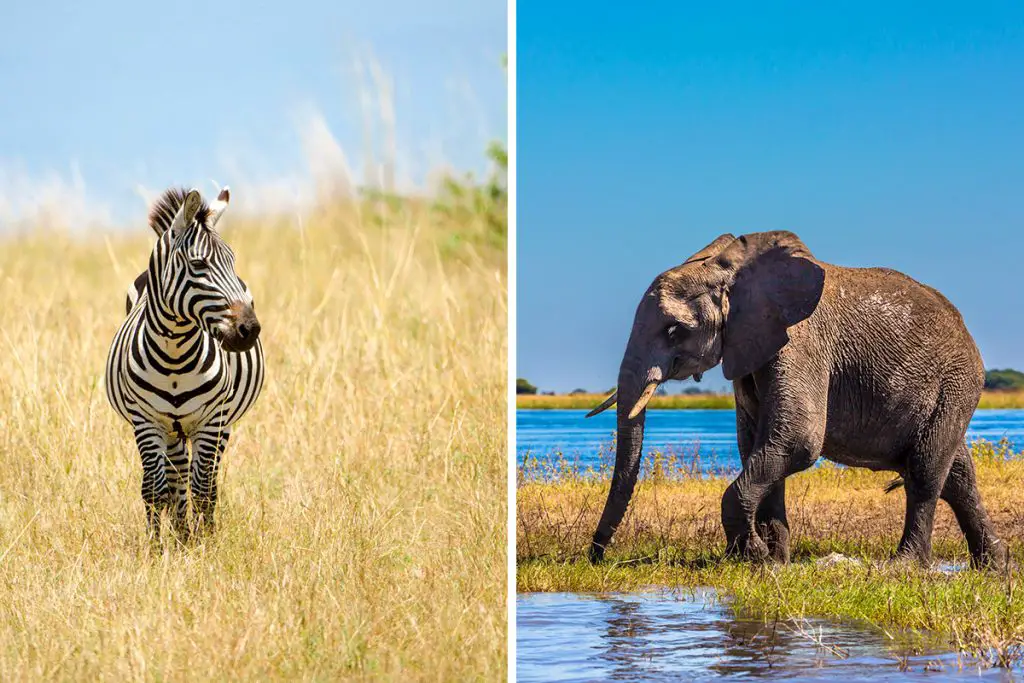Venturing into either Namibia or Kenya opens up a realm of endless exploration and discovery. The sights, sounds, and stories of these places are bound to leave lasting imprints on your heart. Ready to delve deeper into the unique histories and cultures that shape Namibia and Kenya? Read on to unfold the tales of two ancient yet ever-evolving cultures.
History & Culture
The past is a vibrant prelude to the present in both Namibia and Kenya. Unveiling the layers of history and culture in these lands is like stepping back in time, yet with a melody of modern tunes playing in the background. Your journey through the annals of time begins here.
Namibia’s history is like a canvas painted with tales of indigenous tribes, colonial imprints, and a quest for independence. The ancient tribes such as the San and Himba have safeguarded their traditions against the sands of time. Their way of life offers a glimpse into a bygone era, unspoiled by the hustle and bustle of modernity.
On the other side, Kenya’s historical tapestry is rich with the legacy of ancient kingdoms and vibrant traditions. The Great Rift Valley, considered the cradle of humanity, whispers the ancient tales of early humans. The Maasai, Kikuyu, and Luo tribes each add a distinct hue to the cultural mosaic of Kenya, with their traditional dances, attire, and folklore.
The colonial era too, left indelible marks on both lands. Namibia, under German and South African rule, saw the fusion of European and indigenous cultures. The architectural styles and certain societal norms bear the imprints of this colonial past.
Similarly, British colonial rule in Kenya intertwined with local traditions, creating a unique blend of modern and traditional life. The English language and modern education are part of the colonial legacy that mingles with the rich tribal cultures in Kenya.
In summary, while both Namibia and Kenya offer a rich dive into ancient traditions and historical narratives, their stories unfold on different canvases. The quiet dignity of Namibia’s ancient tribes contrasts with the lively tapestry of Kenya’s diverse cultural heritage. Your adventure through the histories and cultures of Namibia and Kenya is not just a journey through time, but a celebration of how the old and new harmoniously coexist.
Attractions & Activities
The allure of adventure beckons from both Namibia and Kenya, with each presenting a unique set of attractions and activities that promise a rich tapestry of experiences. These lands, though sharing the same continent, unfold vastly different adventures before your eyes. It’s a realm where the heart of Africa beats in rhythm with your quest for discovery.
Namibia, often termed the land of endless horizons, beckons with its hauntingly beautiful landscapes. The dunes of Sossusvlei, some of the tallest in the world, offer a surreal hiking experience as you ascend the sandy slopes to catch the sun casting long shadows at dawn.
The ghost town of Kolmanskop tells tales of a bygone diamond era, now a photographer’s playground with its sand-filled ruins.
Kenya, on the other hand, is a wildlife enthusiast’s paradise. The Maasai Mara Reserve is a theatre of the wild, where the annual wildebeest migration, known as the “Great Migration,” plays out in a spectacle of life and death.
Amboseli National Park, with the towering Mount Kilimanjaro in the backdrop, is a haven for elephant lovers, offering close encounters with these gentle giants.
While Namibia’s stark landscapes provide a tranquil backdrop for contemplative solitude, its skies offer a playground for adventure seekers. Hot air ballooning over the Namib Desert is a breathtaking experience, offering panoramic views of the sprawling dunes below.
The rocky landscapes of Damaraland invite you to discover ancient rock art, a silent narrative of the region’s ancestral inhabitants.
Kenya too, offers a blend of adventure and tranquility. The serene Lake Nakuru is a bird-watcher’s Eden, with its shores often painted pink by flocks of flamingos. The rugged terrains of the Great Rift Valley offer thrilling hiking and rock climbing adventures, unveiling panoramic vistas that stretch as far as the eye can see.
In conclusion, the choice between the tranquil expanses of Namibia and the lively, wildlife-rich landscapes of Kenya reflects a deeper calling for the kind of adventure you seek. Each destination, with its unique set of attractions and activities, promises a journey filled with cherished memories and profound connections to the heart of Africa.
Beaches
The gentle caress of the African sun, the soft whisper of waves, and the endless stretch of golden sands; the beaches of Namibia and Kenya are a world of serene beauty and natural allure. Each coastline tells a unique story, offering a different shade of relaxation and adventure by the waters.
Namibia’s Skeleton Coast, a stretch of desolate beauty, extends over 500 kilometers (310 miles) along the Atlantic Ocean. It’s a realm where the desert meets the sea, creating a surreal landscape. The shipwrecks scattered along the shore tell tales of maritime adventures of yore, while the colonies of seals bask on the rugged shores.
Contrastingly, the Kenyan coast along the Indian Ocean unfolds a more tropical paradise with its azure waters and palm-fringed shores. Places like Diani Beach and Watamu offer pristine sandy stretches, inviting you to bask under the warm sun or dive into the clear waters to explore the vibrant coral gardens.
The remoteness of Namibia’s beaches provides a sanctuary of solitude, where the sounds of nature dominate the landscape. It’s a place where introspection comes naturally as you wander along the deserted shores, often with not another soul in sight.
On the flip side, Kenya’s beaches hum with a gentle vibrancy, where local fishermen set sail at dawn, and the rhythmic beats of traditional music often fill the air. The welcoming smiles of the local communities add a warm hue to the tropical paradise that Kenya offers.
In summary, the beaches of Namibia and Kenya, though differing in ambiance and offerings, present a beautiful escape into nature’s embrace. Whether you seek the quietude of Namibia’s desolate shores or the lively, yet laid-back vibe of Kenya’s tropical beaches, the African coast is a sanctuary of natural beauty and soulful experiences.
Eating, Drinking & Nightlife
The rhythm of the night in Namibia and Kenya is as diverse as the day, offering a plethora of culinary delights, refreshing beverages, and vibrant nightlife. As dusk descends, the tempo of life in these African realms takes a delightful turn, opening up avenues of taste, laughter, and dance.
Namibia offers a blend of traditional and international cuisines. The culinary scene is reflective of its German colonial past with offerings like Wiener Schnitzel and apple strudel. Yet, the heritage of hearty Namibian fare shines through in dishes like potjiekos, a slow-cooked stew, and game meats such as kudu and springbok.
In contrast, Kenya’s culinary landscape is a festival of flavors, with dishes like Nyama Choma, a tantalizing grilled meat, and Ugali, a staple starchy accompaniment. The Indian influence is apparent with the presence of chapati and samosas, adding a spicy zest to the local food scene.
When it comes to quenching your thirst, Namibia’s beer culture stands tall, thanks to its German roots. The purity law of beer is honored here, and breweries like the Namibia Breweries Limited offer a taste of this rich tradition. A chilled glass of Windhoek Lager is a customary way to toast to the end of a day’s adventure.
Kenya, on the other hand, celebrates its evenings with a warm Tusker beer or a cup of Chai, showcasing a blend of local and British influences. The local brews like Changaa may be a daring choice for the more adventurous.
As the stars twinkle, the nightlife beckons. Namibia’s evenings are generally laid-back with a preference for quiet bars and eateries under the starlit African sky. The tranquil ambiance provides a serene ending to your day’s explorations.
Kenya’s nightlife is a more exuberant affair with Nairobi known for its lively night scene. The beats of local Benga and Reggae music often fill the night air, inviting all to join in the dance and revelry.
In conclusion, whether it’s the calm serenity of Namibia’s nights or the lively beats of Kenya’s evening festivities, the culinary and nocturnal experiences in these destinations add a unique flavor to your African adventure, painting your nights with memories that resonate with the heartbeats of these lands.
Shopping
Exploring the markets and stores of Namibia and Kenya is akin to embarking on a treasure hunt. Each locale offers a unique shopping experience that reflects the culture, craftsmanship, and creativity of its people.
In Namibia, shopping is a laid-back affair. The capital city, Windhoek, houses various markets and stores offering intricately crafted jewelry, pottery, and wood carvings. The Namibia Craft Centre is a notable spot where the essence of Namibian craftsmanship comes alive through colorful textiles, leather goods, and traditional dolls.
Contrastingly, Kenya offers a bustling shopping scene. Nairobi’s Maasai Market is a kaleidoscope of colors and crafts. Here, you can find beautiful beadwork, soapstone sculptures, and Maasai shuka cloth, which encapsulate the vibrant culture of Kenya.
Namibia’s shopping experience is a journey into the heart of its indigenous creativity. The slow-paced markets allow for a peaceful exploration of the various stalls, each narrating tales of tradition through their wares.
In Kenya, the energy is palpable as you weave through the lively markets. The haggling, the exchange of smiles, and the vast array of crafts make shopping an interactive and enriching experience.
In summary, the shopping adventures in Namibia and Kenya offer a glimpse into the soul of these destinations. Whether it’s the calm, collected ambiance of Namibian markets or the lively, engaging buzz of Kenyan bazaars, each experience is a chapter in your African narrative, waiting to be discovered and cherished.
Accommodation
The hospitality of Africa shines bright in the array of accommodations Namibia and Kenya offer. Whether nestled amidst wild landscapes or perched in bustling urban centers, each lodging option provides a unique lens through which to experience the essence of these diverse lands.
In Namibia, the accommodation spectrum ranges from luxury lodges in the heart of the wilderness to quaint guesthouses in urban areas. The lodges often provide a seamless blend with nature, offering panoramic views of the vast plains, towering dunes, or rugged mountains. The solitude and serenity of these lodges offer a tranquil retreat after a day of exploration.
Kenya, on the other hand, offers a myriad of lodging experiences. The safari camps and lodges in places like Maasai Mara or Amboseli allow you to slumber to the lullabies of the wild. In urban centers like Nairobi, modern hotels with a touch of elegance offer a comfortable stay amidst the city’s vibrancy.
Namibia’s accommodations often prioritize tranquility and a close communion with nature. The design and ethos of many lodges and guesthouses reflect the country’s commitment to conservation and sustainable tourism.
In Kenya, the blend of traditional and contemporary design in accommodations reflects the country’s rich cultural tapestry and modern vibrancy. The warmth of Kenyan hospitality shines through, whether in a luxury resort or a cozy bed and breakfast.
In summary, the accommodations in Namibia and Kenya offer more than just a place to rest your head. They open doors to unique experiences, be it the serene embrace of Namibia’s wilderness or the lively pulse of Kenya’s diverse landscapes.
Family-Friendliness & Children’s Activities
Embarking on a family adventure in either Namibia or Kenya unveils a world of exploration, learning, and fun. Both countries extend a warm welcome to families, offering a range of activities that spark the curiosity and wonder of young minds.
Namibia’s vast open spaces provide a perfect playground for children to interact with nature. Educational safari tours in Etosha National Park ignite a love for wildlife and conservation. Moreover, the adventurous dune bashing or sandboarding on the slopes of Swakopmund’s dunes provides an exhilarating outdoor experience for older kids.
Kenya, on the other hand, is a treasure trove of family-friendly activities. Safari excursions in child-friendly resorts offer young ones a chance to witness the majesty of Africa’s wildlife. Educational visits to places like the David Sheldrick Wildlife Trust foster an appreciation for conservation efforts.
The family-friendly accommodations in Namibia often include spacious lodges with swimming pools and guided nature walks, ensuring a fun and educational experience for the young ones.
In Kenya, many resorts and lodges cater to families, offering kid-friendly amenities and programs that engage children in learning about the local culture and wildlife.
In summary, both Namibia and Kenya beckon families with a promise of adventure, education, and memorable bonding experiences. The engaging activities and welcoming accommodations make both destinations a fantastic choice for family vacations.
Getting There & Getting Around
The journey to and around Namibia and Kenya is an adventure in itself, each offering distinct pathways to explore their breathtaking landscapes and vibrant cultures.
To reach Namibia, international travelers often fly into Hosea Kutako International Airport near Windhoek. From here, domestic flights, charter planes, or car rentals are common ways to explore the diverse regions. The road network is well-maintained, making self-drive safaris a popular choice, allowing freedom to explore at your own pace.
On the flip side, Jomo Kenyatta International Airport in Nairobi serves as the primary gateway to Kenya. Domestic flights quickly connect travelers to other cities and popular tourist destinations.
Moreover, the well-established public transportation system, including matatus (shared minivans) and boda-bodas (motorcycle taxis), offers an authentic way to navigate through the regions.
When it comes to getting around, Namibia’s sparse population and vast landscapes make a private vehicle or guided tour a more comfortable option to traverse the country.
In Kenya, the more compact geography and bustling urban centers provide a range of transportation options. Whether hopping on a local bus, hiring a private car, or embarking on a guided tour, getting around is part of the Kenyan adventure.
In summary, the pathways to and through Namibia and Kenya offer different flavors of adventure. Whether cruising along Namibia’s scenic roads or mingling with locals on a Kenyan matatu, the journey enhances the destination, making every moment a cherished part of your African saga.
Weather
The weather, often a conversation starter, is a vital aspect to consider when comparing Namibia and Kenya. It not only dictates the wardrobe choices but also influences the activities you can indulge in during your visit.
Namibia is known for its arid to semi-arid climate. The winter months (May to October) are generally dry with temperatures ranging between 41°F to 77°F (5°C to 25°C). However, the summer months (November to April) bring a bit of rain, especially in the north, with temperatures soaring up to 104°F (40°C) in the day.
Kenya, on the other hand, experiences a more temperate climate. The coastal regions remain warm and humid year-round, while the inland areas are cooler. The long rainy season from April to June and the short rainy season in November and December bring life to the landscape.
Daytime temperatures typically range from 50°F to 86°F (10°C to 30°C) throughout the year.
Namibia’s desert climate means you’ll experience more sunshine and less rainfall, making it a great destination for those looking to explore outdoor landscapes without much interruption from the weather.
Kenya’s more temperate weather allows for a more varied experience with lush landscapes flourishing especially after the rainy seasons, making the scenery more vibrant and diverse.
In conclusion, Namibia offers a warm, dry climate ideal for exploring the desert and wildlife, while Kenya provides a more temperate, sometimes rainy climate, which supports a rich biodiversity and a different set of outdoor activities.
Safety
The aspect of safety is paramount when exploring new horizons like Namibia and Kenya. It encompasses not only personal safety but also health and well-being during your stay.
Namibia is often regarded as one of the safer countries in Africa with lower crime rates. The low population density contributes to this sense of safety, providing a more relaxed atmosphere for travelers.
Kenya, while bustling and vibrant, requires a bit more vigilance due to higher petty crime rates in urban centers. However, the presence of tourist police in popular destinations aims at ensuring the safety of visitors.
In Namibia, a unique non-crime-related safety topic is the harsh climate and remote landscapes which necessitate adequate preparation to ensure safe travels, especially when exploring the desert regions.
Kenya’s diverse ecosystems present a different set of considerations like vaccinations against tropical diseases, which are essential for health safety.
In summary, with the right preparations and awareness, both Namibia and Kenya can provide safe and enriching travel experiences, each with its own set of considerations to ensure your journey is not only enjoyable but secure as well.
Cost
The cost of travel can significantly impact the choice between Namibia and Kenya. From accommodation to daily expenditures, understanding the financial aspect can help in planning a well-budgeted trip.
In Namibia, daily expenses can be on the lower side with meals at local eateries costing around N$80 to N$150 (approximately $4.50 to USD 8.50). Lodging ranges from modest guesthouses to luxurious lodges, and transportation, especially car rentals, is a cost-effective way to explore the country.
Kenya, conversely, offers a wide range of prices. A meal might cost around Ksh 300 to Ksh 800 (approximately $2.00 to USD 5.50), while accommodation varies significantly from budget hostels to high-end resorts. Public transportation is relatively inexpensive, and matatus provide a budget-friendly way to get around.
Namibia’s cost of living is generally higher than Kenya’s, reflected in the prices for accommodation, food, and activities. However, self-catering options and camping can help manage costs.
Kenya’s diverse range of prices caters to both budget travelers and those looking for a more luxurious experience. The availability of different transportation options also helps in managing the budget effectively.
In summary, while Namibia leans towards a higher cost spectrum, savvy travelers can find ways to manage their budget. Kenya, with its wide range of price options, provides a more flexible cost structure, catering to a broader spectrum of travel budgets.
Which Is Better – Namibia or Kenya?
As the curtains of curiosity gradually draw to a close, the exploration of Namibia and Kenya presents a palette of diverse experiences. From the whispers of ancient civilizations to the vibrant heartbeat of modern cultures, each destination unfolds a unique narrative. Let’s delve into a comparative summary to unveil the essence of these African gems.
The historical and cultural journey through Namibia reveals a rich tapestry of ancient tribes and colonial imprints, while Kenya showcases a lively blend of indigenous traditions and colonial legacies. Namibia offers a glimpse into a bygone era, whereas Kenya provides a vibrant dance of modern and traditional life.
When it comes to attractions and activities, Namibia’s tranquil landscapes and adventurous skies offer a serene yet thrilling exploration. In contrast, Kenya’s wildlife-rich realms and diverse terrains promise an exhilarating venture into the wild, nurturing the spirit of adventure.
The beaches of Namibia present a desolate beauty where the desert kisses the Atlantic, while Kenya’s tropical coastline along the Indian Ocean unveils a paradise adorned with azure waters and golden sands. Each beach experience is a soothing whisper of nature’s essence.
The culinary scene and nightlife in Namibia reflect a calm and laid-back ambiance with a touch of German influence, while Kenya buzzes with vibrant eateries and energetic night scenes, echoing the rhythmic beats of its cultural heart.
Shopping in Namibia is a tranquil endeavor into the heart of indigenous craftsmanship, whereas the bustling markets of Kenya are a lively exploration of colors, crafts, and culture. The shopping escapades in both lands narrate tales of tradition and creativity.
Accommodation in Namibia mirrors its commitment to conservation and solitude, while Kenya’s lodgings offer a blend of luxury, tradition, and modern comfort. The warm hospitality in both destinations promises a homely sojourn amidst the wild.
Family-friendly adventures, ease of transportation, contrasting weather patterns, safety considerations, and cost dynamics further paint the picture of diversity, making the choice between Namibia and Kenya a reflection of personal preferences and desires.
Choose Namibia if you yearn for serene landscapes, historical glimpses, and a quiet retreat. Opt for Kenya if your heart beats for wildlife adventures, cultural vibrancy, and a lively, interactive ambiance. Your African dream awaits, whether in the quiet embrace of Namibia’s dunes or the lively rhythm of Kenya’s wilderness.

